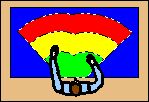Motion Economy in Lean Manufacturing
Productivity in Workstation Design
What Is Motion Economy?
 Motion
economy helps achieve productivity and reduce Cumulative Trauma at the workstation or sub-micro
level. The Principles of Motion Economy eliminate wasted motion, ease operator tasks, reduce
fatigue and minimize cumulative trauma such as Carpal Tunnel and tendonitis. Ralph M. Barnes codified these principles in the 1930's. They are still valid. Workstation
designers should memorize them.
Motion
economy helps achieve productivity and reduce Cumulative Trauma at the workstation or sub-micro
level. The Principles of Motion Economy eliminate wasted motion, ease operator tasks, reduce
fatigue and minimize cumulative trauma such as Carpal Tunnel and tendonitis. Ralph M. Barnes codified these principles in the 1930's. They are still valid. Workstation
designers should memorize them.
Lean Manufacturing & Motion Economy
Shigeo Shingo and Taiichi Ohno both had a thorough grounding in basics such as motion economy. Shingo used it in his SMED work and for workstation design. Ohno ensured that the concepts were applied throughout Toyota and its supplier system. The Western world pretty much forgot about Motion Economy in the rush to computerization of the 1960's and 1970's. In Lean Manufacturing the Toyota Production System (TPS) was re-introduced as Lean Manufacturing, Motion Economy was often left behind.
Limitations of Motion Economy
Motion economy has limitations. It does not account for physical limitations or differences in operators. Moreover, a movement that appears ineffective from a motion economy perspective actually may prevent fatigue and possible injury from static posture loading. However, using them alongside Principles of Ergonomics and a rationalized design procedure will ensure a productive, safe and optimum workstation.
Body Segment Classes
The principles are, for the most part, self- explanatory. However, Body Segment Class needs elaboration. In the table, each movement after class 1 involves body parts from the previous class(es), and more of the body participates in the motion. Tasks should have the lowest possible motion class. To do this, place the most frequently grasped objects near the operator. In addition, items should be close together, lightweight, and easily positioned at the end of the motion.
References
BARNES, RALPH M., Motion and Time Study, Second Edition, John Wiley & Sons, New York, 1940.
Summarized From Ralph L. Barnes
1.0 Use of Human Body
- The two hands should begin end their motions at the same time.The two hands should not be idle at the same time except during rest periods.
- Motions of the arms should be made in opposite and symmetrical directions and should be made simultaneously
- Hand motions should be confined to the lowest classification with which it is possible to perform the work satisfactorily
- Momentum should be employed to assist the worker whenever possible, and it should be reduced to a minimum if it must be overcome by muscular effort.
- Smooth continuous motions of the hands are preferable to zigzag motions or straight-line motions involving sudden and sharp changes in direction.
- Ballistic movements are faster, easier, and more accurate than restricted (fixation) or "controlled" movements. Rhythm assists smooth and automatic performance. Arrange the work to permit an easy and natural rhythm.
2.0 Arrangement of The Work Place
- There should be a definite and fixed place for all tools and materials.
- Tools, materials, and controls should be located close in and directly in front of the operator.
- Gravity feed bins and containers should be used whenever possible.
- Drop delivers should be used whenever possible.
- Materials and tools should be located to permit the best sequence of motions.
- Provide for adequate visual perception. Good illumination is the first requirement.
- Arrange the height of the workplace and chair for alternate sitting and standing, when possible.
- Provide a chair of the type and height to permit good posture.
3.0 Design of Tools and Equipment
- Relieve hands of work that can be done more advantageously by a jig, fixture, or a foot-operated device.
- Combine tools whenever possible.
- Pre-position tools and materials.
- Where each finger performs some specific movement, such as in typewriting, the load should be distributed in accordance with the inherent capacities of the fingers.
- Handles (i.e. cranks and large screwdrivers) should permit as much of the surface of the hand to come in contact with the handle as possible, especially when considerable force is necessary.
- For light assembly, a screwdriver handle should be smaller at the bottom.
- Levers, crossbars, and hand wheels should be located in such positions that the operator can manipulate them with the least change in body position and with the greatest mechanical advantage.
4.0 Body Segment Classes
- Use motions with the lowest feasible class:
| Class | Pivot Point | Body Members |
| 5 | Trunk | Torso, upper/forearm, wrist, fingers |
| 4 | Shoulder | Upper/forearm, wrist and fingers |
| 3 | Elbow | Forearm, wrist and fingers |
| 2 | Wrist | Hand, and fingers |
| 1 | Knuckle | Fingers |
Note: This list does NOT include all of Barnes' principles. It also omits many details. It includes the most commonly applied principles that will help the occasional user.
■ ■ ■ ■ ■ ■ ■


